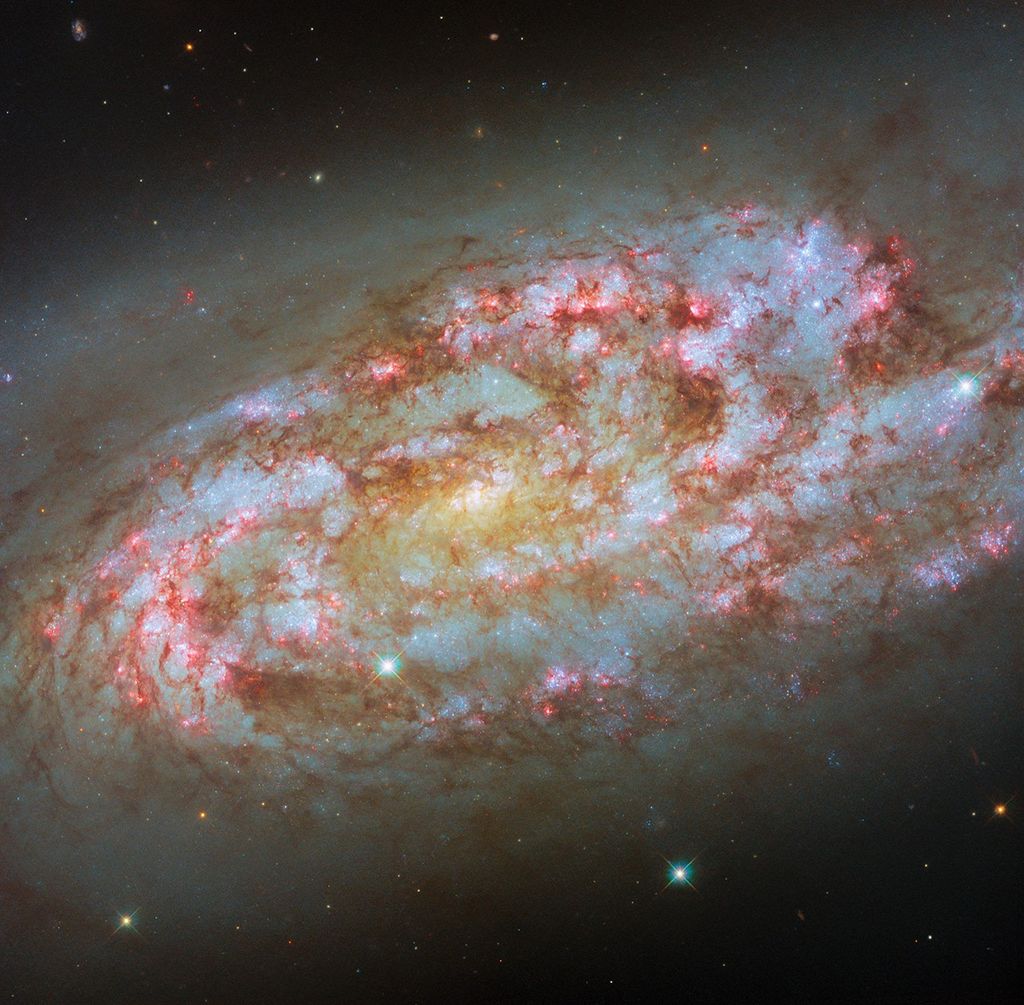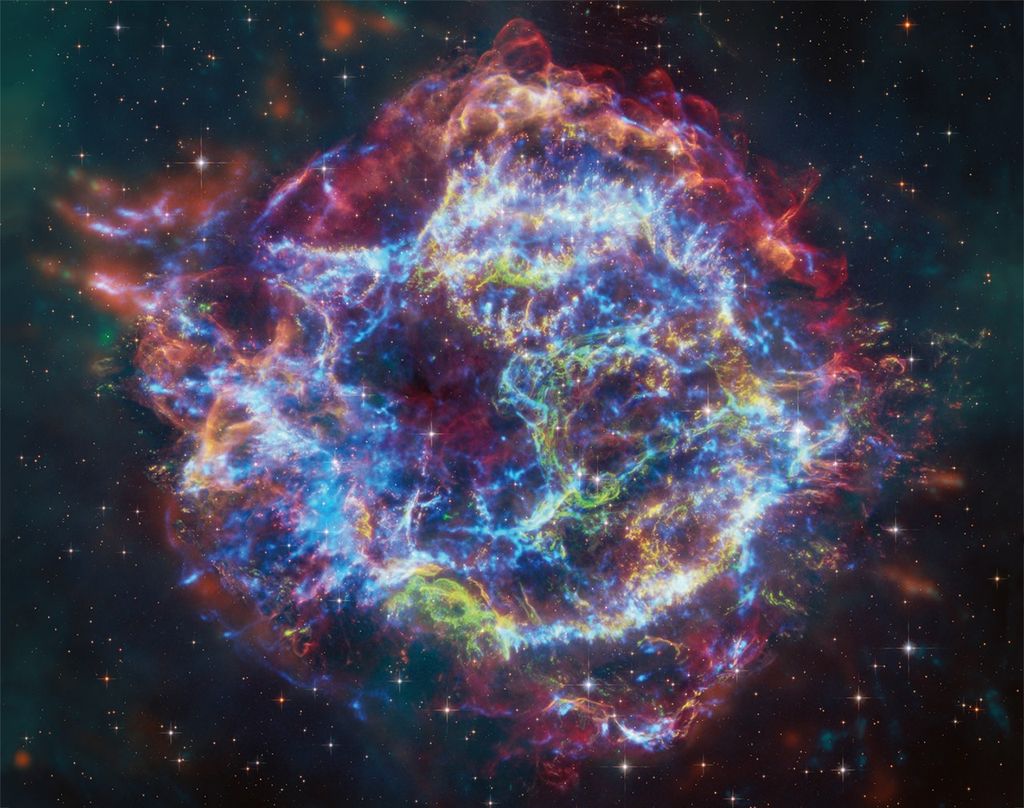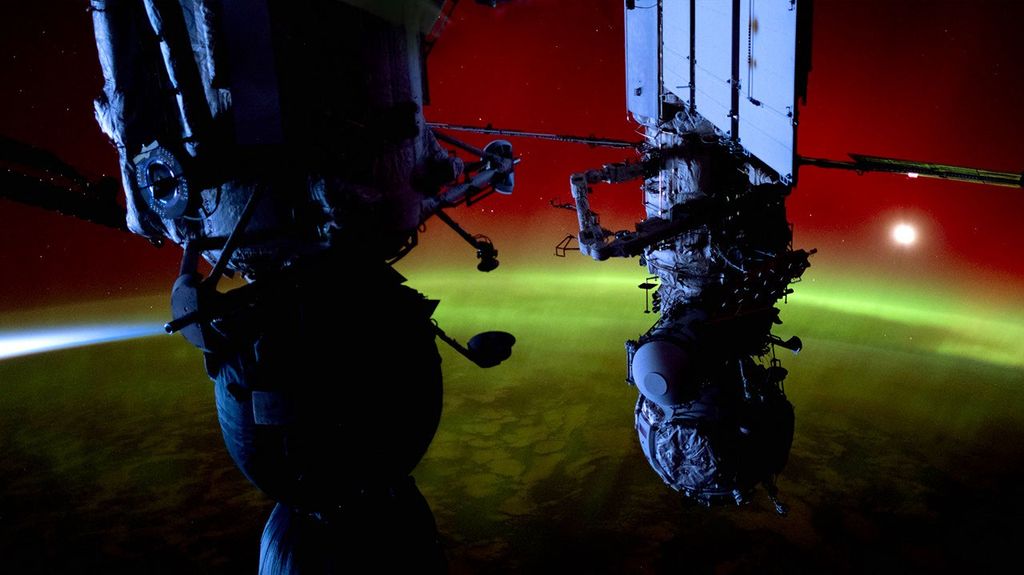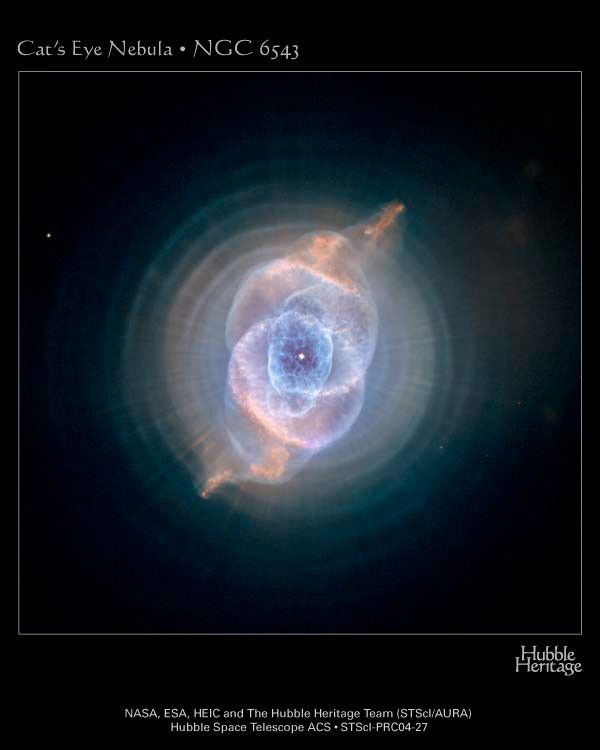1 min read
The Eagle Has Risen: Stellar Spire in the Eagle Nebula

Appearing like a winged fairy-tale creature poised on a pedestal, this object is actually a billowing tower of cold gas and dust rising from a stellar nursery called the Eagle Nebula. The soaring tower is 9.5 light-years or about 57 trillion miles high, about twice the distance from our Sun to the next nearest star.
Stars in the Eagle Nebula are born in clouds of cold hydrogen gas that reside in chaotic neighborhoods, where energy from young stars sculpts fantasy-like landscapes in the gas. The tower may be a giant incubator for those newborn stars. A torrent of ultraviolet light from a band of massive, hot, young stars [off the top of the image] is eroding the pillar.
The starlight also is responsible for illuminating the tower's rough surface. Ghostly streamers of gas can be seen boiling off this surface, creating the haze around the structure and highlighting its three-dimensional shape. The column is silhouetted against the background glow of more distant gas.
The edge of the dark hydrogen cloud at the top of the tower is resisting erosion, in a manner similar to that of brush among a field of prairie grass that is being swept up by fire. The fire quickly burns the grass but slows down when it encounters the dense brush. In this celestial case, thick clouds of hydrogen gas and dust have survived longer than their surroundings in the face of a blast of ultraviolet light from the hot, young stars.
Inside the gaseous tower, stars may be forming. Some of those stars may have been created by dense gas collapsing under gravity. Other stars may be forming due to pressure from gas that has been heated by the neighboring hot stars.
The first wave of stars may have started forming before the massive star cluster began venting its scorching light. The star birth may have begun when denser regions of cold gas within the tower started collapsing under their own weight to make stars.
The bumps and fingers of material in the center of the tower are examples of these stellar birthing areas. These regions may look small but they are roughly the size of our solar system. The fledgling stars continued to grow as they fed off the surrounding gas cloud. They abruptly stopped growing when light from the star cluster uncovered their gaseous cradles, separating them from their gas supply.
Ironically, the young cluster's intense starlight may be inducing star formation in some regions of the tower. Examples can be seen in the large, glowing clumps and finger-shaped protrusions at the top of the structure. The stars may be heating the gas at the top of the tower and creating a shock front, as seen by the bright rim of material tracing the edge of the nebula at top, left. As the heated gas expands, it acts like a battering ram, pushing against the darker cold gas. The intense pressure compresses the gas, making it easier for stars to form. This scenario may continue as the shock front moves slowly down the tower.
The dominant colors in the image were produced by gas energized by the star cluster's powerful ultraviolet light. The blue color at the top is from glowing oxygen. The red color in the lower region is from glowing hydrogen. The Eagle Nebula image was taken in November 2004 with the Advanced Camera for Surveys aboard NASA's Hubble Space Telescope.
About the Object
- R.A. PositionR.A. PositionRight ascension – analogous to longitude – is one component of an object's position.18h 18m 51.05s
- Dec. PositionDec. PositionDeclination – analogous to latitude – is one component of an object's position.-13° 49' 51.11"
- ConstellationConstellationOne of 88 recognized regions of the celestial sphere in which the object appears.Serpens
- DistanceDistanceThe physical distance from Earth to the astronomical object. Distances within our solar system are usually measured in Astronomical Units (AU). Distances between stars are usually measured in light-years. Interstellar distances can also be measured in parsecs.About 6,500 light-years (2,000 parsecs)
- DimensionsDimensionsThe physical size of the object or the apparent angle it subtends on the sky.3.2 arcminutes (6 light-years or 1.9 parsecs) wide
About the Data
- Data DescriptionData DescriptionProposal: A description of the observations, their scientific justification, and the links to the data available in the science archive.
Science Team: The astronomers who planned the observations and analyzed the data. "PI" refers to the Principal Investigator.The Hubble image was created from HST data from proposal 10393: K. Noll, H. Bond, C. Christian, L. Frattare, F. Hamilton, Z. Levay, M. Mutchler, and T. Royle (The Hubble Heritage Team, STScI). - InstrumentInstrumentThe science instrument used to produce the data.HST>ACS/WFC
- Exposure DatesExposure DatesThe date(s) that the telescope made its observations and the total exposure time.November 4 - 7, 2004, Exposure Time: 3.4 hours
- FiltersFiltersThe camera filters that were used in the science observations.F435W (B), F555W (V), F502N ([O III]), F658N (Halpha + [N II]), F814W (I)
- Object NameObject NameA name or catalog number that astronomers use to identify an astronomical object.Eagle Nebula, M16,NGC 6611, IC 4703
- Object DescriptionObject DescriptionThe type of astronomical object.Gaseous Nebula in Open Cluster
- Release DateApril 25, 2005
- Science ReleaseHubble Celebrates 15th Anniversary with Spectacular New Images
- CreditNASA, ESA, and The Hubble Heritage Team (STScI/AURA)

Blue: F435W (B) + F502N ([O III]) Green: F555W (V) + F658N (Halpha + [N II]) + F502N ([O III]) Red: F658N (Halpha + [N II]) + F814W (I)
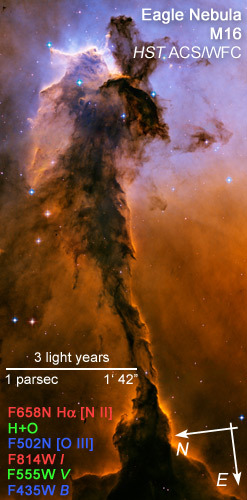
Related Images & Videos

Out of This Whirl: the Whirlpool Galaxy (M51) and Companion Galaxy
The graceful, winding arms of the majestic spiral galaxy M51 (NGC 5194) appear like a grand spiral staircase sweeping through space. They are actually long lanes of stars and gas laced with dust. This sharpest-ever image of the Whirlpool Galaxy, taken in January 2005 with the...
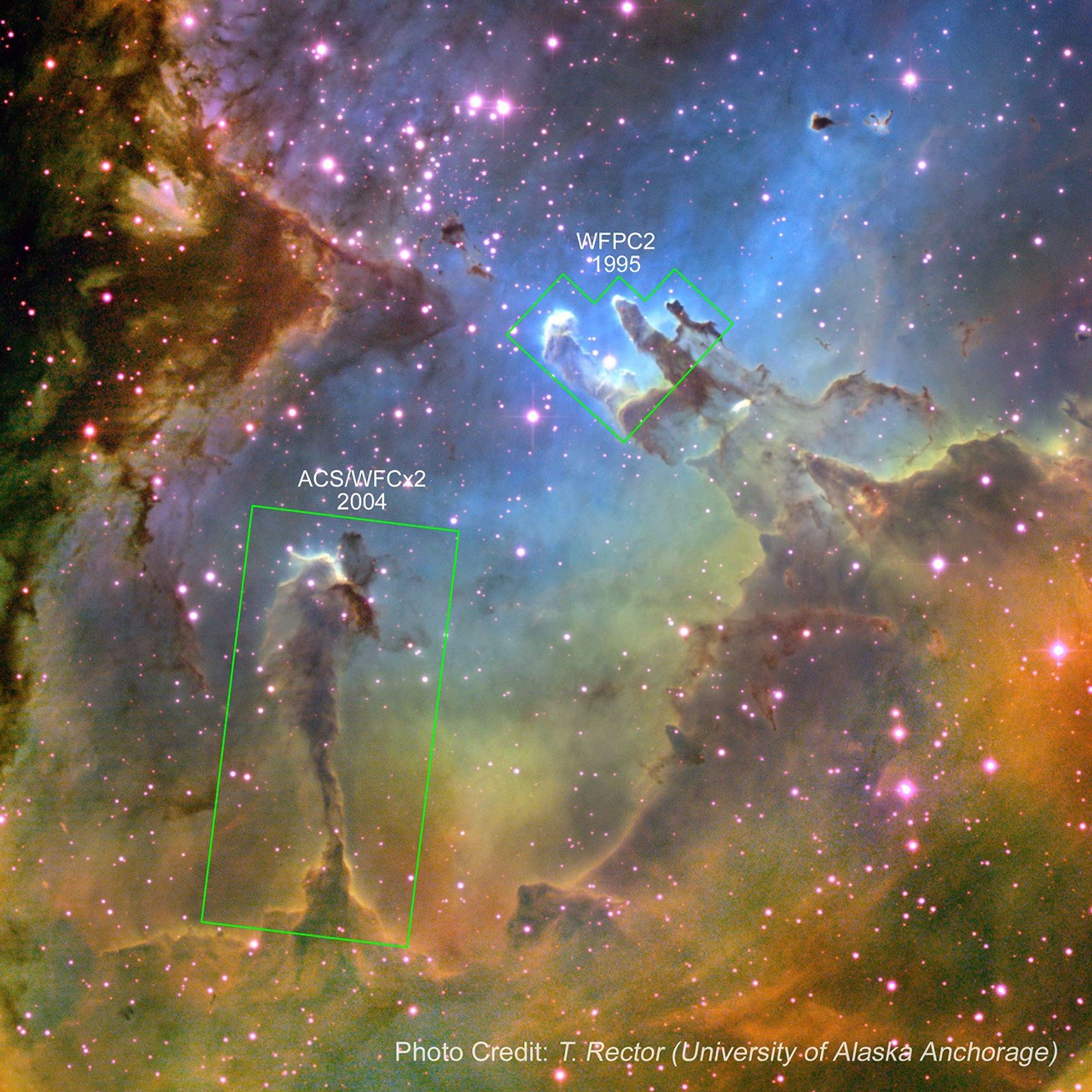
Location of HST images in the Eagle Nebula
This wide-field image of the Eagle Nebula was taken at the National Science Foundation's 0.9-meter telescope on Kitt Peak with the NOAO Mosaic CCD camera. It shows the areas seen in greater detail with Hubble's Wide-Field Planetary Camera 2 (WFPC2) in 1995 and Advanced Camera...
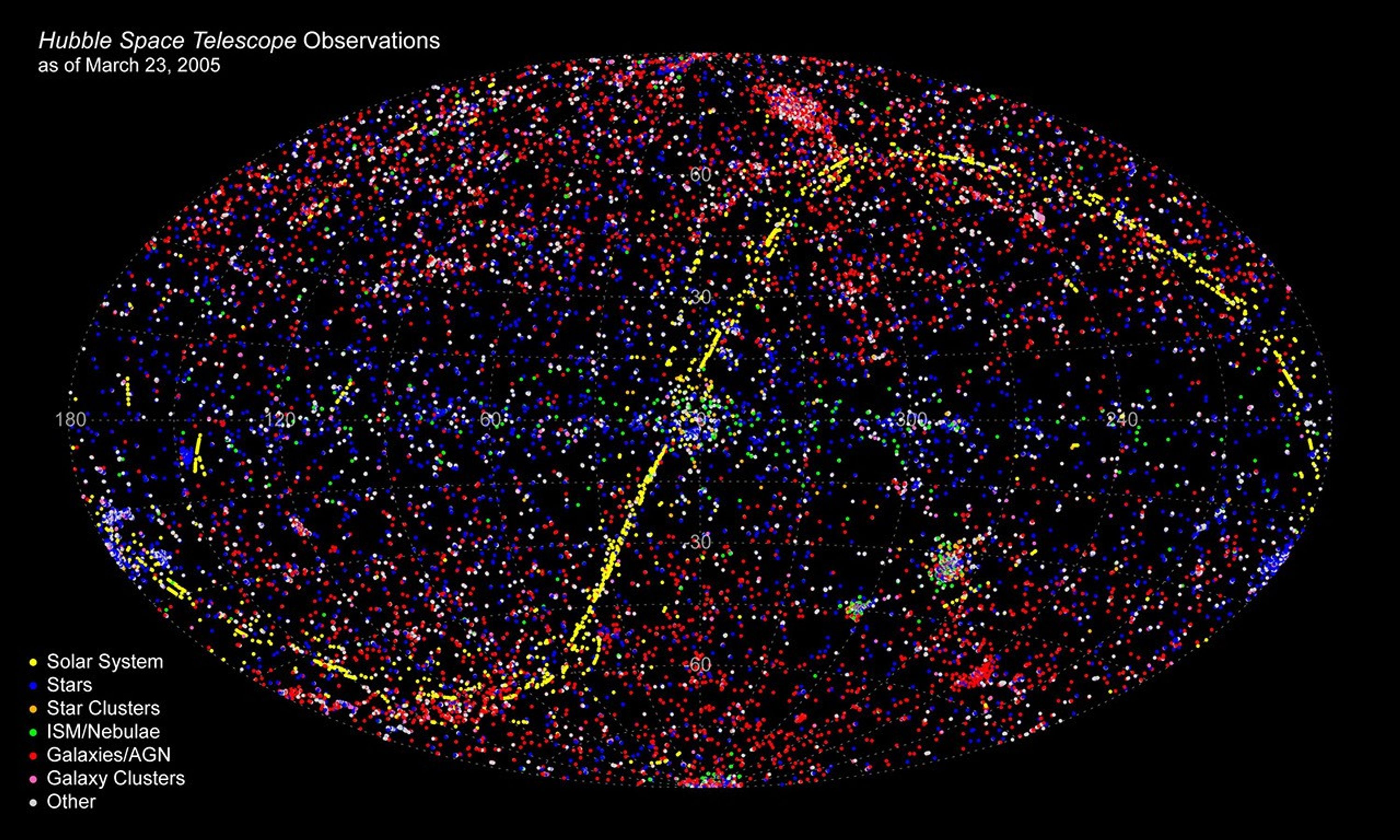
All-Sky Plot of All HST Observations as of Mar. 23, 2005
In its 15 years of viewing the sky, NASA's Hubble Space Telescope has taken more than 700,000 exposures and probed more than 22,000 celestial targets as represented by the different colored dots in this map of the sky. All data from April 1990 through March 2005 are represented...
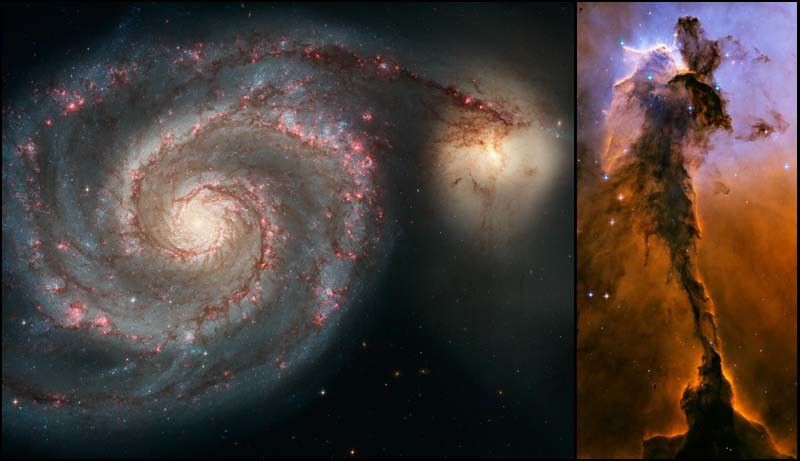
Hubble's 15th Anniversary Images of the Whirlpool Galaxy (M51) and Eagle Nebula
During the 15 years NASA's Hubble Space Telescope has orbited the Earth, it has taken more than 700,000 photos of the cosmos; images that have awed, astounded and even confounded astronomers and the public. NASA released new views today of two of the most well-known objects...
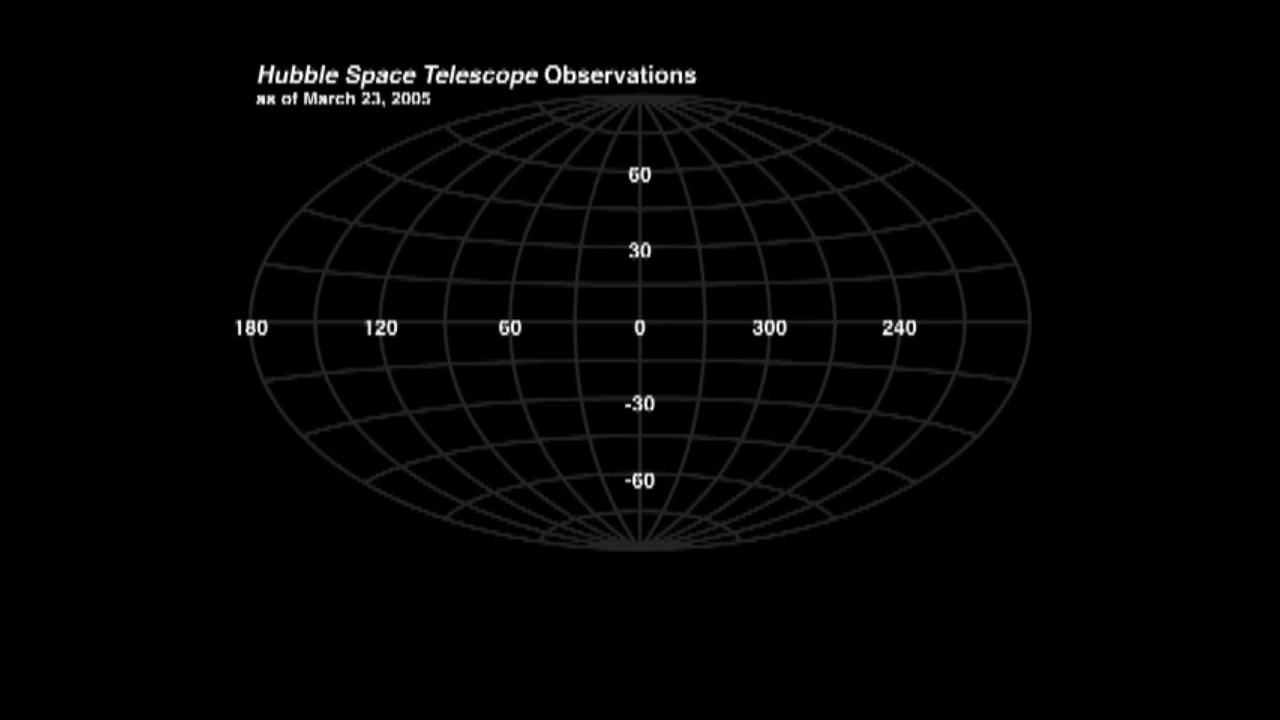
Hubble Observations Sky Map Animation
In its 15 years of viewing the sky, NASA's Hubble Space Telescope has taken more than 700,000 exposures and probed more than 22,000 celestial targets as represented by the different colored dots in this map of the sky. All data from April 1990 through March 2005 are represented...
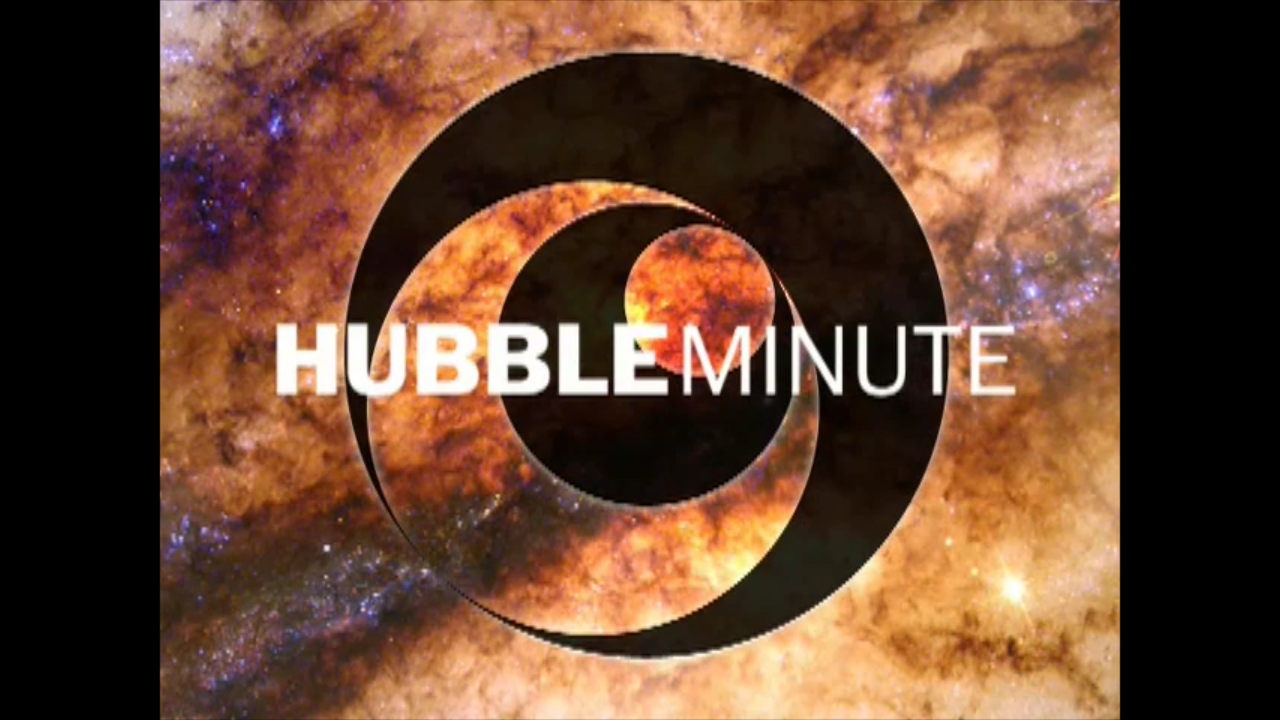
HubbleMinute: 15 Years of Science from Hubble Space Telescope
15th anniversary Hubble Minute on the top science discoveries of the Hubble Space Telescope. Images cover planets, comets, stars, galaxies and almost back to the beginning of time. The story leads up to Hubble's largest images ever revealed.

HubbleMinute: Amazing Space "Galileo to the Great Observatories: Telescopes from the Ground Up"
Amazing Space has launched a revolutionary new online program that covers the history, people and technology of telescopes from Galileo to the Great Observatories. The program is unique in its application of on-line tools to build skills for a knowledge base to understand the...
Share
Details
Claire Andreoli
NASA’s Goddard Space Flight Center
Greenbelt, Maryland
claire.andreoli@nasa.gov













